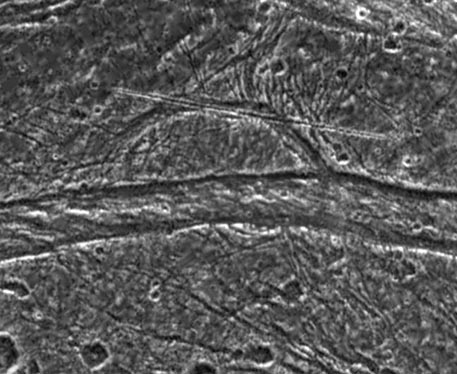
|
Credit: The Galileo Project,
NASA
Explanation:
Where is the rest of the circle? Jupiter's largest moon
Ganymede has some truly unusual terrain,
including the pictured half circle above cut by nearly parallel curves.
Full circles can be easily explained by
impact craters,
but partial circles imply that some resurfacing has
occurred since the original impact.
The diameter of the half circle is about 32 kilometers.
Also of interest is a dense linear
crater chain
that cuts across the top of the half-circle.
Mysteries like these are typically solved by the
hard work of reconstructing a sequence of natural occurrences,
which in this case may yield a better understanding of
Ganymede's interesting past.
|
January February March April May June July August September October November December |
| ||||||||||||||||||||||||||||||||||||||||||||||||
NASA Web Site Statements, Warnings, and Disclaimers
NASA Official: Jay Norris. Specific rights apply.
A service of: LHEA at NASA / GSFC
& Michigan Tech. U.
Based on Astronomy Picture
Of the Day
Publications with keywords: Ganymede
Publications with words: Ganymede
See also:
